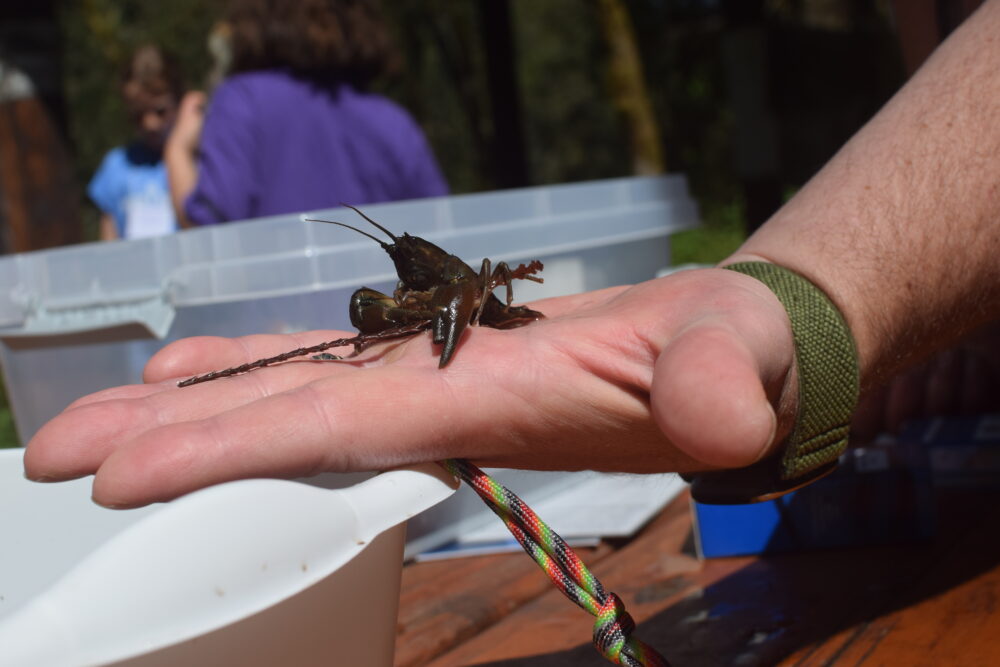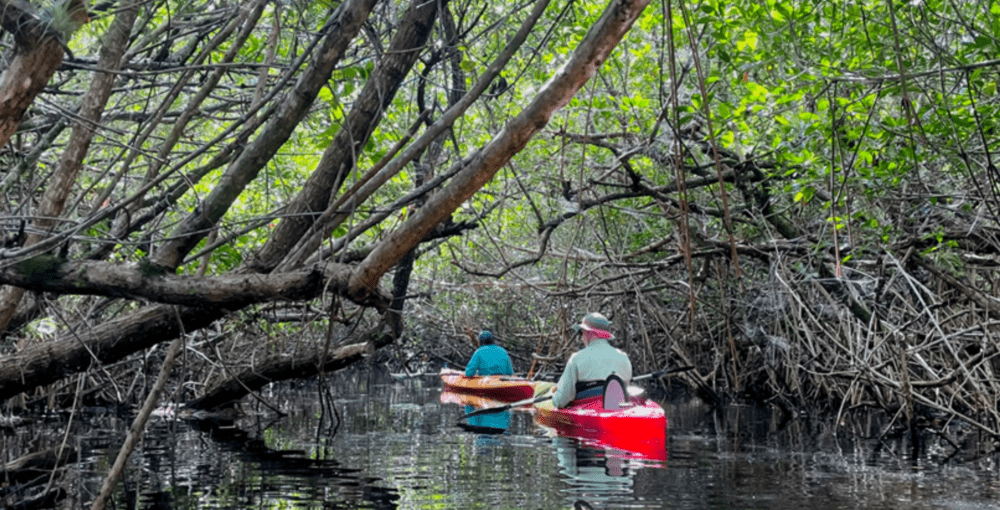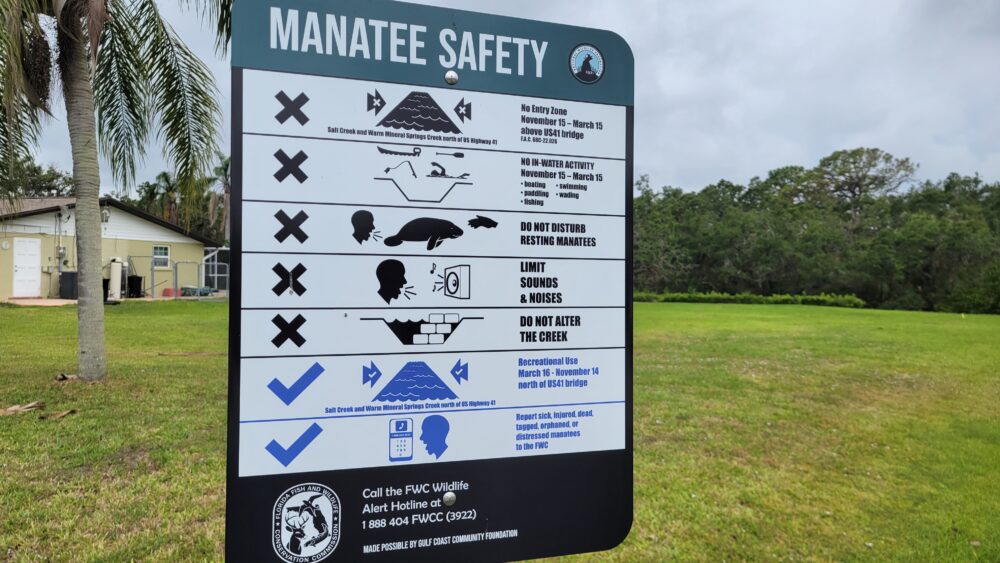We have much more to do and your continued support is needed now more than ever.
Field Guides for Your Green Hour
 Observing and appreciating nature is the first step in nature awareness. But knowing what you see, identifying it, and understanding its needs are necessary if we are to become good stewards of our planet. To do this, you need a field guide.
Observing and appreciating nature is the first step in nature awareness. But knowing what you see, identifying it, and understanding its needs are necessary if we are to become good stewards of our planet. To do this, you need a field guide.
A field guide is a reference book designed to help you identify plants and animals. There are field guides to birds, trees, butterflies, amphibians and just about every plant and/or animal category you can think of. There are field guides to regions which include both plants and animals, and there are even field guides to the night sky!
Field Guides from the National Wildlife Federation >>
Every household should have at least one field guide. And if it is only one, I think it should be a field guide to birds. Why? Because birds are everywhere, many of us feed them, and most people enjoy watching them. We should all be able to identify the birds in our backyard and at our feeder. I find that when people buy their first field guide to birds, they are amazed at the number of bird species in their yard that they wouldn’t have realized or recognized without the help of a field guide. I have about 28 resident species in my backyard and I bet you have almost as many–no matter where you live.
You can buy field guides at your favorite bookseller. But you might find the variety of field guides overwhelming. For example, my local bookstore has more than 10 different field guides to birds alone. They have a whole section for field guides. So how do you know which is best?
Here’s a checklist of things to consider when buying a field guide:
- Your location – Be sure to find the right guide for your area. For example, you can find a field guide to eastern or western (U.S.) birds, one to birds of North America and one to birds of Pennsylvania. The larger the region you choose, the more species you’ll find in the book.
- Photos or illustrations? – One might argue that photos are more realistic than illustrations. But photos often contain backgrounds and other items which can detract from the subject, might capture a subject in lighting that affects its colors, during an odd pose (such as stretching), or from an odd angle (from above). Both photos and illustrations can be misleading if, say, a bird is represented in only breeding plumage (which is often very different from winter plumage). So neither photographs nor illustrations are perfect. That said, I happen to prefer photos because, to my eye, they are the most realistic representations–even if the photo is flawed. Consider that the youngest of readers (K-3) are probably more accustomed to illustrations, thanks to all the illustrated children’s books. I’d recommend either style for young students (K-3) and, based on my personal experience, photographic guides for students grade 4 and up.
- Organization of the book and the species – When you see a bird you want to identify, you have to find it in your book. Consider how a book is organized before you buy it. Some field guides sort subjects by color, shape, size, or habitat. Some field guides use plates. That means that the photos or illustrations are located in one part of the book and the species information (text) is in another part. I don’t recommend plate organization for children below the 9th grade only because it can be frustrating to navigate through the guide. Many field guides sort species by taxonomic order, which is a scientific hierarchical classification–such as families of birds (warblers) or butterflies (swallowtails). This kind of grouping may be initially meaningless to you and you might have to work a little to find your new bird in the book, but you’ll quickly figure out the order and you’ll soon grasp which families birds belong to. It’s helpful for children to know such classifications, and I recommend field guides in taxonomic order.
- Depth of species information – Some field guides provide little information about the species. I recommend that you look for a guide that has useful information without compromising the size of the photographs or the overall size of the book. At a minimum, for kids in grades 4 and up, your field guide should contain the species range, whether or not a species is native, the habitat needs of a species, and where and how it nests. Consider whether or not you’ll need to take your book outside or with you during a walk. If so, choose guides that are easy for you and your children to carry in your pocket or backpack. And even if your field guide will stay in the house, keep in mind that children may be reluctant to pick up an extremely large or heavy reference book. And when you bring a field guide home, don’t put it on a bookshelf–put it on the coffee table, kitchen counter, or somewhere near the chair from which you watch the birds in your yard or at your feeder. Otherwise, you might see a new bird at the feeder and by the time you walk to the bookshelf, locate the book and bring it back, the bird could be gone.
My Field Guide Recommendations
I use different field guides with different ages of children for different reasons. Here’s my short list of which, when, and why.
- When I want illustrated guides for K-3 students, I use the Golden Guides from St. Martin’s Press or the Peterson ‘s First Field Guides by Houghton Mifflin. For photographic introductory guides for grades K-5, I like the Stokes Beginner Guides and the National Audubon Society’s Pocket Guides. These series are compact and easy for small hands to carry. They cover the most common of plants and animals and the amount of information on each species is limited, so they work well for beginners of all ages.
- For a greater variety of all species of birds, insects, butterflies and mammals, I like the Kaufman Focus Guides by Houghton Mifflin. In this series the subjects are photographed, then cropped from their background and digitally edited to give you the best possible image. Keep in mind, however, that the photos are small and not well suited for the youngest of readers. I would recommend this series for grades 4 and up.
- If you need comprehensive species information, consider the National Audubon series, which is a photographic series of guides. You’ll find a guide to almost all groups of plants and animals in North America.
- Of all of my personal field guides, the ones I don’t leave home without are the Stokes Field Guide to Birds (Little, Brown, and Company) and the Sibley Field Guide to Birds (published by Knopf). The Stokes book has large photos with the species information right under the photo and it includes behavior and nesting information, It works well with any K-12 student. The Sibley Guide is the “bible” of the birding world and the multiple images of each species are very helpful in the field. It’s great for middle and high school students and experienced birders.
 Jane Kirkland is the award-winning author of the “Take A Walk®” series of nature discovery books as well as “No Student Left Indoors: Creating a Field Guide to Your Schoolyard”, the acclaimed educator’s guide to helping students discover nature in their schoolyard. To learn more about Jane and her books visit: www.takeawalk.com.
Jane Kirkland is the award-winning author of the “Take A Walk®” series of nature discovery books as well as “No Student Left Indoors: Creating a Field Guide to Your Schoolyard”, the acclaimed educator’s guide to helping students discover nature in their schoolyard. To learn more about Jane and her books visit: www.takeawalk.com.




















